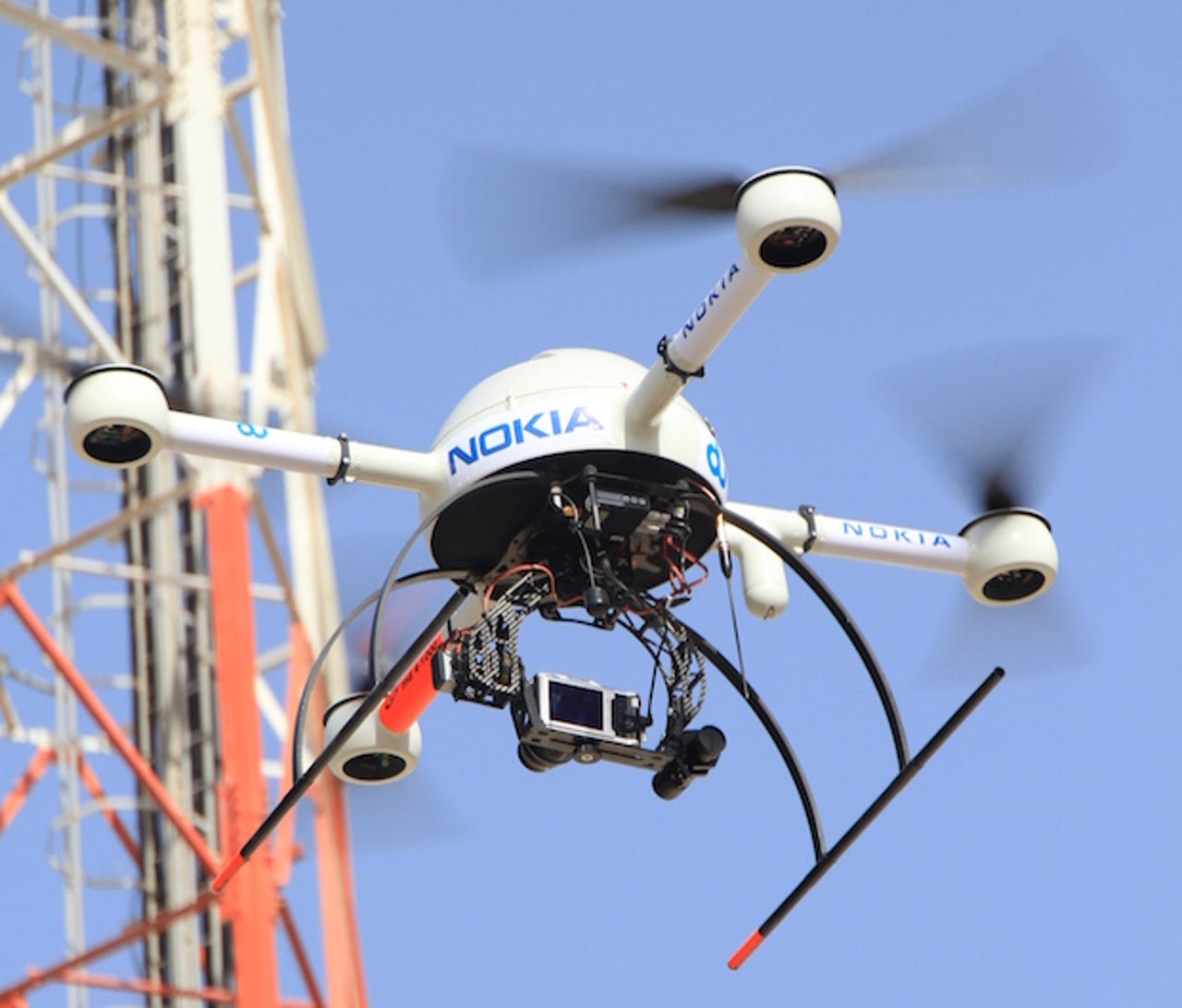Nokia puts 'telco drones' to work inspecting cell towers


Amazon hopes drones will one day be used to bring packages to Prime customers, free from the constraints of road traffic and costly human delivery drivers. In the same vein, postal services in France and Switzerland have launched drone trials to see whether the unmanned aerial vehicles could be used to deliver the post in the next five years.
Now Nokia is examining whether it should require human technicians to climb cell towers to inspect them when a drone can do the job faster and without the risk of falling.
For a recent trial of the drones, Nokia teamed up with operator du in the United Arab Emirates. While inspecting the towers, the drones carried smartphones to help with radio planning and line of sight testing between radio towers.
The proof of concept was conducted in the contained environment of the Dubai International Stadium, a sports stadium that seats 25,000 people.
Read this
The drones could be used to cut down the frequency of technicians climbing up and down a telecoms tower, which Nokia says can be very dangerous in bad weather conditions. In addition, with a single passover the drones could generate a panoramic view of the lattice tower and offer the potential to remotely monitor installations.
The drones were useful for helping engineers design the network, and detecting if trees interfered with a frequency being used, determining power requirements, and latency simulation.
Nokia and its partners employed Secutronic INSPIRE1 drones for network optimisation at the stadium and MICRODRONES d4-1000 models for tower inspection, line of sight testing, and radio site planning.
Nokia isn't the first to think of drones for network maintenance. Fluke Networks last year launched a drone edition of its Wireless Work Advisor with a focus on safety and efficiency.
More about drones